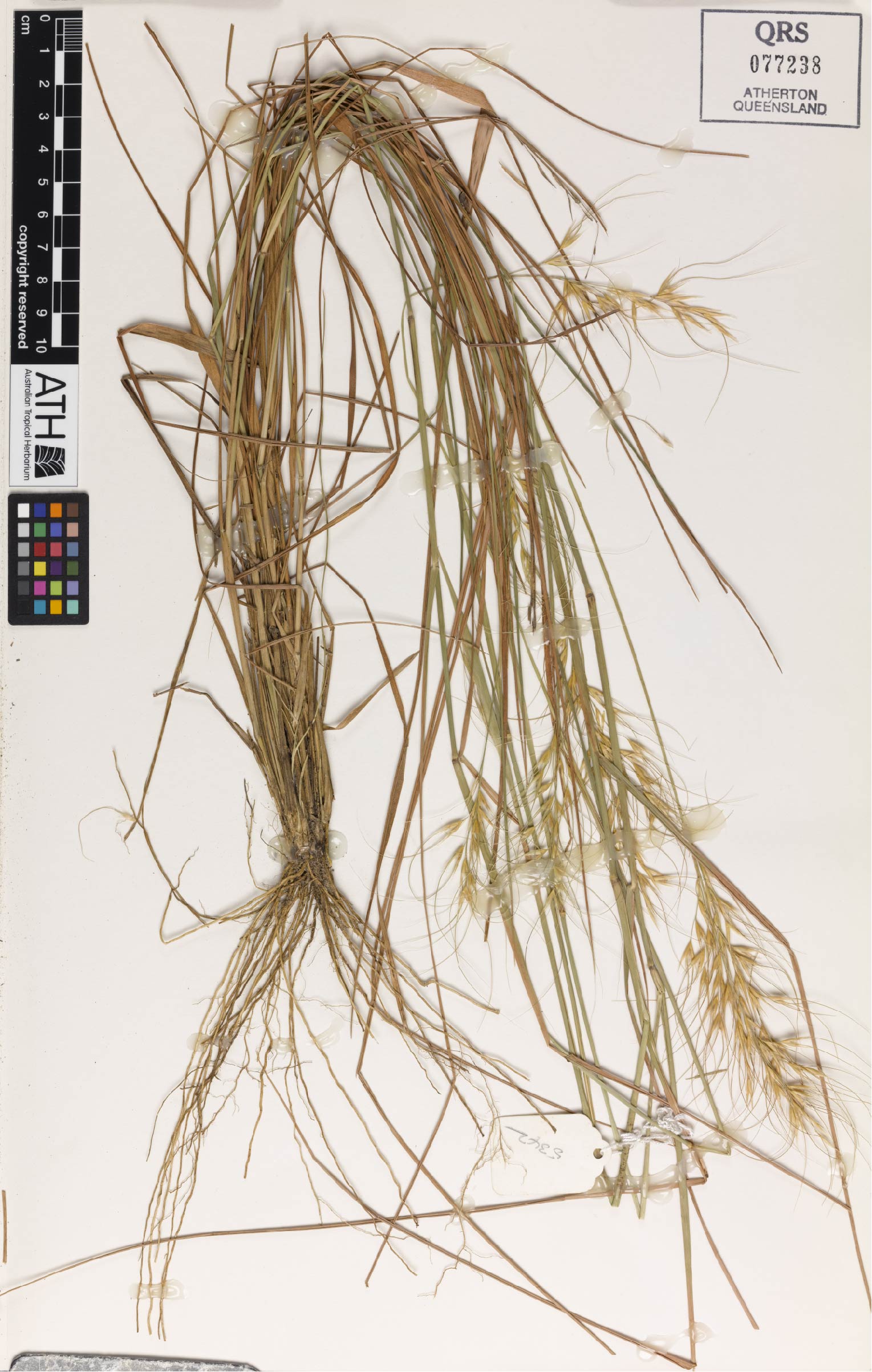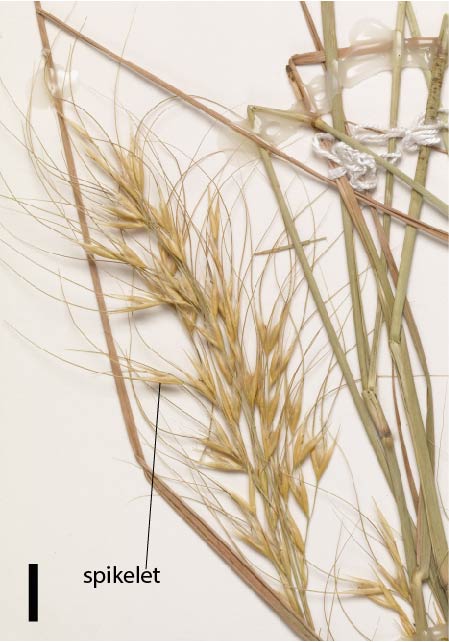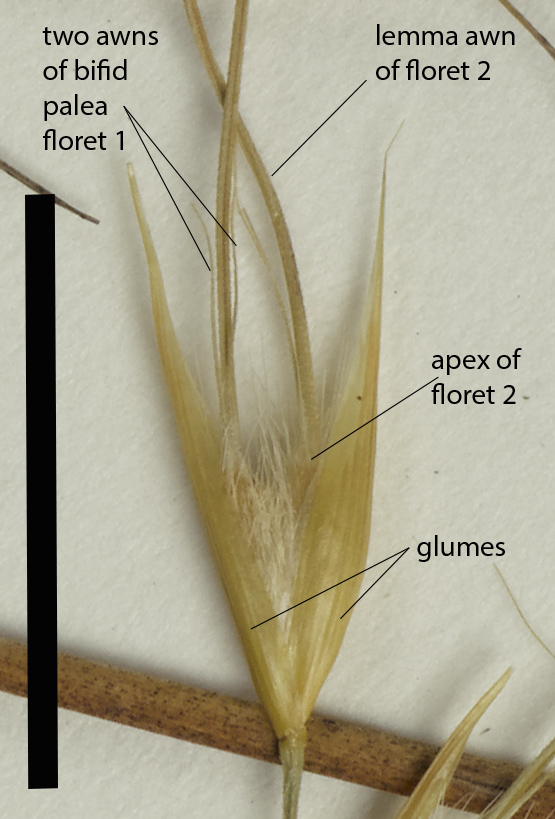Eriachne stipacea
F.Muell.
This species occurs throughout Cape York Peninsula as an erect annual or perennial, 37.5-100 cm high. The leaves and stems are hairy with warty based hairs or are hairless. Leaves are cauline (arising along the stem) with blades to 23 cm long (Fig. 1). Inflorescences or flowering branches terminate the stem and are exserted from leaf axils. The inflorescences or flowering branches are open panicles with branches arising along a central stem, the panicles are 5-13 cm long, 2.4-7 cm wide (Fig. 2). Eriachne stipacea has spikelets (the basic flowering unit) consisting of two glumes encompassing two bisexual florets (modified flowers) (Fig. 3). The florets are shorter than the glumes, with the lemma of each floret giving rise to a curved awn (bristle) 40-60 mm long, the palea of each floret is split into two small awns 2.5-11 mm long.
Botanical Description
An annual or perennial species to 100 cm high. The culms or stems hairy with tubercle-based hairs or glabrous. Leaves hairy with tubercle-based hairs or glabrous; leaf blade to 23 cm long and up to 7.5 mm wide. The inflorescences are open panicles, 5-13 cm long, 2.4-7 cm wide (Fig. 2). Spikelets are defined by two glumes 7-16 mm long, each with an awn to 5 mm long, and encompass two bisexual florets, the florets are much shorter than the glumes (3.5-5.5 mm long). The lemma of each floret is awned, the lemma awn (28-)40-60 mm long, with the palea of each floret splitting to form two awns much shorter than the lemma awn, 2.5-11 mm long (Fig. 3). The lemma is densely hairy with hairs exceeding the apex by up to 3 mm, and is abruptly contracted at the awn junction and has short grooves present or absent at the apex.
Diagnostic Features
Eriachne stipacea is one of many species of Eriachne characterised by long awned spikelets; the awns curled, curved or bent. Other long awned species of Eriachne which occur in the region and may be easily confused with this species are E. armittii, E. burkittii, E. glauca, E. squarrosa, E. vesiculosa and E. rara. Some of these species are more easily distinguished than others. Most are treated in this guide, however some of the key differences between the species are shown in Table 1. In other regions of Australia e.g. the Northern Territory, additional species may also need to be considered. Eriachne stipacea is distinguished by the combination of the following characters the absence of bladder like sacs on the upper leaf surface, a hairy, loose or open inflorescence, the glume usually awned, the florets being distinctly shorter than the glumes and the bifid two awned palea. Users are encouraged to consult Lazarides (2005) or Simon & Alfonso (2011) for more detail on distinguishing between these species.
Natural Values
This species is likely to provide seed for granivorous or seed eating animals.
Habitat
This species occurs across Cape York Peninsula and a few localities around central Queensland and the Gulf of Carpentaria. In the Northern Territory it is mostly known from islands and the coastal mainland. Usually on flat to gently undulating country in sandy or sandy loam soils, often in association with laterite and seasonally wet sites (Lazarides 2005, Simon 2011).
Land Management Notes
Species of this genus are considered generally to be of low forage value (Lazarides 2002).



Resources
AVH (2017) Australia’s Virtual Herbarium, Council of Heads of Australasian Herbaria, <http://avh.chah.org.au>, accessed 30 May 2017.
Lazarides, M. (1995) The genus Eriachne (Eriachneae, Poaceae). Australian Systematic Botany 8(3): 355-452.
Lazarides, M. (2002) Economic attributes of Australian grasses. Flora of Australia 43: 213-245.
Lazarides, M., Weiller, C.M. & McCusker, A. in Mallett, K. (ed.) (2005) Eriachne. Flora of Australia 44B: 132-175.
Simon, B.K. & Alfonso, Y. (2011) AusGrass2, http://ausgrass2.myspecies.info/accessed on [20 March 2017].

